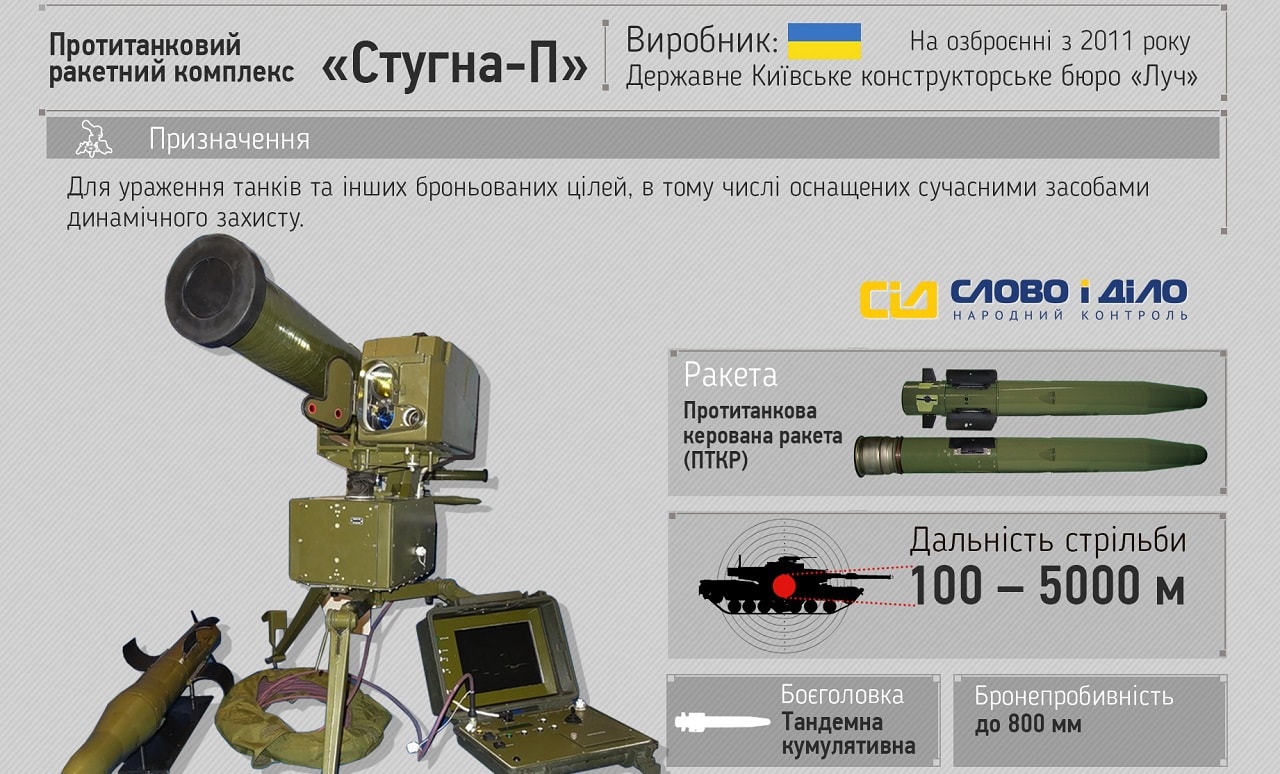Ukraine’s use of different anti-tank missile systems against Russian tanks is causing Vladimir Putin’s forces to bleed. The defenders have a combination of Javelin and Stugna-P anti-armor guided missiles that are eliminating Russian tanks left and right. Ukrainian soldiers are now employing them together to great effect.
The Anti-tank Fight Favors Ukraine
Ukrainian soldiers are still doing what they have been so good at throughout the war. They know the terrain and where to hide. They simply take on a covered and concealed position and ambush unsuspecting Russian tanks. These tactics have been especially lethal in both urban and rural areas. It sounds too simple, but that’s the beauty of the Javelin and Stugna-P. They are so easy to use that the most well-trained professional troops down to the volunteer national guard territorial forces know how to blast a tank. The 19FortyFive has documented how a former Member of Parliament volunteered to fight, was trained on the Stugna-P, and now has several kills.
Systems Are Used in Tandem
A recent video (See below) released by the elite helicopter-borne 80th Separate Air Assault Brigade of the Ukrainian Air Assault Forces shows a Javelin and a Stugna-P blowing up Russian tanks. This has been a disaster for Moscow in both tank losses and suffering at the hands of Ukraine and their adept use of psychological and information warfare. The Stugna-P is perfect for information operations because it is sighted in by a video screen from a laptop interface. A soldier can just use a smartphone to record the video from the Stugna-P screen and post it to social media.
Effective in Both City and Country
The Ukrainians have used anti-tank missiles as a force multiplier in cities and suburbs against Russian columns of tanks and armored vehicles. Tanks traveling in a line have two directional choices – forward and reverse. Simply take out the tanks in the front of the columns and tanks in the rear and the enemy advance stops. Then the defenders have a kill zone to eliminate the rest of the trapped tanks.
Video shows that in rural areas Russian tanks seem like they are lost and traveling in groups of two or three. They seem to be confused as to where they are going. They often stop – seemingly waiting for orders from command. This makes them easy targets for the defenders’ anti-tank missiles.
The Javelin Is Breaking Toys in Ukraine
The Russians made numerous fatal mistakes in this war, but one of the most egregious was thinking its force of tanks would easily overwhelm the Ukrainians. Many Russian tanks have explosive reactive armor thought to be impervious to anti-tank missiles. But the Javelin has a two-stage warhead that blows up the armor and then penetrates the tank to often ignite the ammunition in a massive fireball. Or the Javelin can be shot upwards to arc down on the vulnerable turret.
Stugna-P Is a Punisher
The Stugna-P is a Ukrainian homegrown system. The missile from the Stugna-P can lock on to a target with its guidance system or it can be semi-automatically guided by the user during its flight. Judging from videos on social media, it appears the Ukrainians are going for the semi-automatic guidance mode. Either way, it has proven to be extremely effective.
How Can Russia Fight Back Against Ukraine?
What can Russia do? They have made an operational mistake by relying on the battalion tactical groups (BTGs). The idea was to have a self-contained unit of armor, artillery, and infantry. But it seems the infantry is either incompetent, made up of poorly trained conscripts, or they are lacking in numbers. The dismounted infantry never gets to dismount as they are blown up in armored personnel vehicles. The infantry is supposed to rapidly strike back against enemy soldiers who are using anti-tank systems. This is not happening.
Little Air Support Is Available
Air support is also lacking. One tactic the Russians could use is having support aircraft, such as attack helicopters, flying out in front of BTGs to eliminate any soldiers using anti-tank guided missiles. But the defenders have Stinger shoulder-fired, portable anti-aircraft systems, so the helicopters can be shot down. The Russians also do not have enough warplanes to provide close air support when BTGs are being ambushed.
Russia seems to be willing to lose tanks to anti-armor missiles. They have had plenty of time to adjust tactics, but that doesn’t seem to be happening. To make matters worse, Russian troops are giving up and abandoning tanks, driving them off bridges and into rivers and ditches. It’s a sad situation that portends future losses. The world’s armies are watching how a determined defender armed with just lightweight and portable anti-tank missiles can change the trajectory of the war.
Now serving as 1945’s Defense and National Security Editor, Brent M. Eastwood, PhD, is the author of Humans, Machines, and Data: Future Trends in Warfare. He is an Emerging Threats expert and former U.S. Army Infantry officer. You can follow him on Twitter @BMEastwood.

